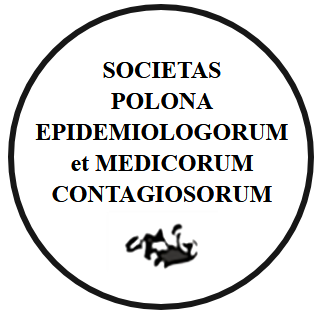ABSTRACT
Until the 19th century, the factor causing epidemics was not known, and the escape from a place where it occurred as well as isolation of patients was considered to be the only effective way to avoid illness and death.
Quarantine in a sense similar to modern times was used in 1377 in Ragusa, today’s Dubrovnik, during the plague epidemic. It was the first administratively imposed procedure in the world’s history. It was later used in Venice and other rich port cities in the Mediterranean. On the territory of today’s Poland, quarantine measures were used by the so-called Mayor of the Air – LukaszDrewno in 1623 during the plague epidemic in Warsaw.
The quarantine left its mark on all areas of human activity. It affected all humanity in a way that is underestimated today. Throughout history, it has been described and presented visually. It is omnipresent in the world literature, art and philosophy. However, the isolation and closure of cities, limiting trade, had an impact on the economic balance, and the dilemma between the choice of inhabitants’ health and the quality of existence, i.e. their wealth, has been the subject of discussions since the Middle Ages.
Since the end of the 19th century, quarantine has lost its practical meaning. The discovery of bacteria and a huge development of medical and social sciences allowed limiting its range. In the 20th century isolation and quarantine no longer had a global range, because the ability to identify factors causing the epidemic, knowledge about the incubation period, carrier, infectiousness, enabled the rational determination of its duration and territorial range.
The modern SARS COV 2 pandemic has resulted in a global quarantine on a scale unprecedented for at least three hundred years. The aim of this paper is to present the history of quarantine from its beginning to the present day, including its usefulness as an epidemiological tool.
STRESZCZENIE
Do XIX w. nie był znany czynnik wywołujący epidemie, a ucieczkę z miejsca, gdzie wystąpiła oraz izolowanie chorych uważane było za jedyny skuteczny sposób uniknięcia choroby i śmierci. Kwarantanna w znaczeniu zbliżonym do współczesnego została zastosowana w 1377 r. w Raguzie, dzisiejszy Dubrownik, podczas epidemii dżumy. Było to pierwsze w dziejach świata postępowanie nałożone administracyjnie. Później stosowano ją w Wenecji oraz innych bogatych miastach portowych basenu Morza Śródziemnego. Na terenach dzisiejszej Polski, działania o charakterze kwarantanny zastosował tzw. Burmistrz Powietrzny – Łukasz Drewno w 1623 r. podczas epidemii dżumy w Warszawie.
Kwarantanna odcisnęła piętno na wszelkich obszarach działalności człowieka. Dotyczyła całej ludzkości w sposób dziś niedoceniony. Na przestrzeni dziejów była opisywana i przedstawiana wizualnie. Jest wszechobecna w światowej literaturze, sztuce, filozofii. Izolacja i zamykanie miast, ograniczanie handlu wpływało jednak na bilans ekonomiczny, a dylemat między wyborem zdrowia mieszkańców a jakością bytu, czyli ich zamożnością – powodował dyskusje już od średniowiecza.
Od końca XIX w. kwarantanna straciła na praktycznym znaczeniu. Odkrycie bakterii oraz olbrzymi rozwój nauk medycznych i społecznych umożliwił ograniczanie jej zasięgu. W XX w. izolacja i kwarantanna nie miały już zasięgu globalnego, ponieważ możliwość identyfikacji czynnika wywołującego epidemię, wiedza o okresie wylęgania, nosicielstwie, zaraźliwości, pozwalała na racjonalne ustalanie czasu jej trwania i wyznaczania zasięgu terytorialnego.
Współczesna pandemia wirusem SARS COV 2 spowodowała ogólnoświatową kwarantannę na skalę niespotykaną od co najmniej trzystu lat. Celem artykułu jest przedstawienie historii kwarantanny od jej początku do współczesności, z uwzględnieniem przydatności jako narzędzia epidemiologicznego.
You can change cookies settings in your browser. Restricted use of cookies in the browser configuration may affect some functionalities of the website.





